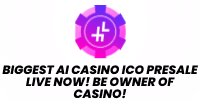In the rapidly evolving digital world, Non-Fungible Tokens (NFTs) are revolutionizing the art market and making significant inroads into the educational sector. As we navigate through 2024, we’re witnessing how NFTs are unlocking new dimensions in learning, teaching, and academic administration. Here are five innovative ways NFTs transform the educational landscape, offering a glimpse into a future where learning is more interactive, accessible, and personalized.
1. Digital Certificates and Diplomas
The traditional paper-based system of certificates and diplomas is gradually becoming obsolete, thanks to NFTs. Educational institutions now issue digital certificates as NFTs, which are tamper-proof and easily verifiable. This leap eliminates the risk of forgery and loss, simplifying the verification process for employers and other schools. Moreover, these digital credentials are accessible from anywhere worldwide, making them particularly beneficial for international students and remote learners. The shift towards NFT-based certifications is paving the way for a more secure, efficient, and globally recognized accreditation system.
As educational institutions embrace NFTs for issuing secure and verifiable digital certificates, another digital advancement enhancing the academic experience is the rise of professional writing platforms. A reputable online UK writing service can offer students personalized assistance with their coursework, from essays to research papers, ensuring high-quality submissions that reflect in-depth research and original thinking. Innovative digital solutions and high-quality academic support create a more flexible, accessible, and efficient educational environment for students worldwide.
2. Unique Learning Materials
When considering the revolutionary impact of NFTs on educational content, here are key points to note:
- Control and Distribution: Educators can maintain control over their content’s distribution by tokenizing their materials, ensuring rightful ownership and use.
- Intellectual Property Protection: Tokenization via NFTs safeguards educators’ intellectual property rights, offering a secure way to share their work.
- Customizable Learning Resources: NFTs enable personalizing educational materials, allowing content to be adapted to meet individual student needs.
- Enhanced and Interactive Materials: Digital textbooks and courses can be updated with interactive elements, creating a more dynamic and engaging learning environment.
These advancements signify a shift towards a more interactive, personalized, and secure educational experience through NFT technology.
3. Interactive Learning Experiences
Beyond static materials, NFTs are facilitating fully interactive learning experiences. Imagine virtual reality (VR) science labs or historical tours where participation is recorded and rewarded with NFTs. These tokens can unlock further educational content, prove learning achievements, or grant access to advanced modules. This gamification of education motivates students by offering tangible rewards for their engagement and progress. Furthermore, it enables educators to track participation and understanding in real-time, providing insights into the effectiveness of teaching methods and materials.
4. Fundraising and Scholarships
In the realm of fundraising through NFTs in education, consider these points:
- Creative Fundraising: As innovative fundraising tools, schools, and programs leverage NFTs, including student-created digital art and tokens for exclusive benefits.
- Supporting Scholarships and Improvements: Proceeds from NFT sales can bolster scholarships, enhance infrastructure, and kickstart new educational projects.
- Exclusive Benefits for Donors: NFT holders may gain access to special perks, such as exclusive lectures or mentorship opportunities, enriching the educational experience.
- Community Engagement: This new fundraising method strengthens the bond among donors, students, and educators, promoting a collaborative effort toward educational advancement.
This strategy represents a cutting-edge approach to fostering financial support and community involvement in the educational sector.
5. Enhanced Community Engagement
Lastly, NFTs foster more robust connections between educational institutions and their communities. Alums, for instance, can own a piece of their school’s history through NFTs, whether it’s digital memorabilia or moments captured from significant events. It deepens alumni engagement and offers a new avenue for them to contribute to their alma mater’s legacy and future. Similarly, schools can create NFT-based rewards for community involvement in various programs, encouraging ongoing support and participation.
Wrapping Up
In 2024, NFTs are not just a trend but a transformative force in the educational landscape. By enabling secure digital certification, creating unique and interactive learning materials, facilitating innovative fundraising, and enhancing community engagement, NFTs are paving the way for a future where education is more engaging, accessible, and connected. As we continue to explore the potential of this technology, it’s clear that the intersection of NFTs and education holds exciting possibilities for learners and educators alike.
Disclaimer: The views and opinions stated by the author or any other person named in this article are for informational purposes only and do not constitute financial, investment, or other advice




















